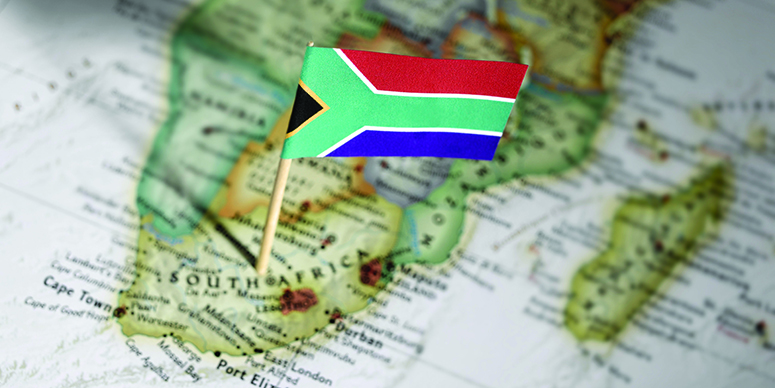South Africa: Prospects for Oil, Gas Exploration and Development
Rigzone contributor Nicholas Newman takes a look at the prospects for oil and gas development in South Africa
South Africa has very little in the way of proven oil and gas reserves. Exploration for oil and gas started as far back as 1913 and, so far, has proved disappointing. During the 1990s, prospectors and exploration companies, using modern survey techniques, discovered locally-useful but globally-insignificant amounts of oil and gas. Today, while the petrogeology for oil looks modest, the prospects for natural gas, whether conventional gas, shale gas or coal-bed methane (CBM) gas, appear to be more promising.
Oil Discoveries have been Very Small So Far
South Africa has proven crude oil reserves of some 15 million barrels, located in the Orange Basin off the west coast and the Bredasdorp Basin in south coast of Cape Province (source: Council for Geoscience).
To date, even in terms of its proven crude oil reserves, finds by exploration companies have been very small. Today’s crude oil production by state-owned energy company PetroSA amounts to less than 5,000 barrels per day and comes from the Oribi and Oryz fields, which are located in Block 9 off South Africa’s southern coast. In 2014, PetroSA reported a total oil production output of some 160,000 barrels per day, made up largely from imports of 425,000 barrels per day of crude oil in 2014, according to South African Revenue Service data.
Eighth-Largest Shale Gas Reserves in the World
Recent estimates by the U.S. Energy Information Administration (EIA) put South Africa’s recoverable offshore gas at 9 trillion cubic feet (Tcf), while there is another 9 Tcf of unconventional gas located in the arid Karoo desert and some 1.5 Tcf of CBM gas. South Africa is estimated to have the eighth largest shale gas resources in the world.
Most of South Africa’s natural gas produced by PetroSA comes from the maturing offshore 65,000-boepd (barrels of oil equivalent per day) Moss Gas F-A and South Coast Complex fields, and is sent onwards via an onshore pipeline to the gas-to-liquids facility in Mossel Bay in Eastern Cape. However, all is about to change, according to Paul Eardley-Taylor who is responsible for Standard Bank’s Oil & Gas sector coverage activities for Southern Africa, across upstream, midstream, downstream, “off South Africa’s west coast is the 540-billion cubic feet Ibhubesi gas field, which is now licensed for development”.
Ibhubesi gas production is expected in late 2017, at an initial flow rate of 100 million standard cubic feet per day. This gas will be delivered first to Eskom’s 1,300-MW Ankerlig power station in Atlantis, Cape Province, and eventually to a planned 800-MW independent power plant.
Rising Domestic Demand for Gas
South Africa currently consumes some 180 billion cubic feet of gas per year, of which imports of 120 billion cubic feet (Bcf) arrive by pipeline from central Mozambique for customers in Johannesburg (source: EIA, January 2016). With the prospect of rising demand for gas in South Africa, ROMPCO, the pipeline operator, plans to increase capacity from 88 million gigajoules per year to 212 million gigajoules per year by the end of 2017 (source: Engineering News).
The main customer segments for gas are power generation, GTL production, heating and manufacturing activities. Gas provides about 3 percent of South Africa’s total installed power output of 45,645 MW (source: Statistics South Africa). Today’s gas-to-power program envisages increasing gas power generation to 3.1 GW by 2025. To support the gas-to-power program, and avert a looming power crisis, South Africa needs an interim solution as the development of prospective gas fields is at least a decade away.
Two main options are under consideration: increasing gas imports from neighboring Mozambique’s northern gas fields and LNG imports. The former would entail the construction of a $6-billion, 1,615-mile long pipeline to link Johannesburg with the new fields. However, in the short-to-medium term South Africa could rely on imports of gas by LNG tanker to perhaps Saldanha port, either with a floating storage and regasification unit (FSRU) or a floating LNG (FLNG) import terminal.
Oil Firms have a Renewed Interest in SA’s Hydrocarbon Resources
The discoveries made to date bear no comparison with the significant finds off Argentina or the North Sea gas fields. However, ongoing advances in technology and seismographic equipment have kindled renewed interest in South Africa’s hydrocarbon resources by some of the world’s largest oil companies.
According to Eardley Taylor, since 2012 “in respect of each of offshore and onshore (primarily shale) blocks, leading industry participants such as Exxon Mobil, Eni, Anadarko, Shell, Statoil, Total, Chevron (among others) are now involved in pre-drilling exploration”. In October 2015, Shell was given the go-ahead to start drilling in South Africa’s Orange basin (source: Fin24). In general, current exploration activities are focused on the Karoo Desert for shale gas, on the North Coal fields for coal seam gas and for gas off the West and Southern coasts of the Cape and Natal coasts.
However, the size of all of these resources is yet to be determined, a process which will take time. Though Eardley Taylor comments that “current estimates of yet-to-find resources are for … trillions of cubic feet of gas and billions of barrels of oil”, he also stresses that “this potential is entirely untested at this point and is speculative”. Even with such an eye- watering prospect at hand, the exploration and development of South Africa’s oil and gas sector is likely to be slow and at least a decade away. Of more immediate impact will be imports of liquid natural gas, which will facilitate a quick and substantial ramp-up in power output by both state and independent gas power producers in coming years. As for domestic oil and gas discoveries, turning a prospect into reality will require many years and lots of money.

 石油圈
石油圈
